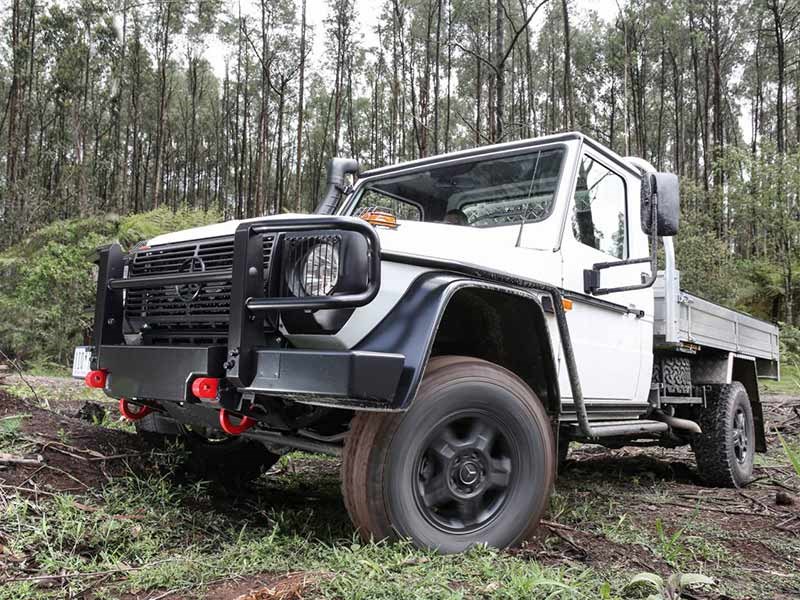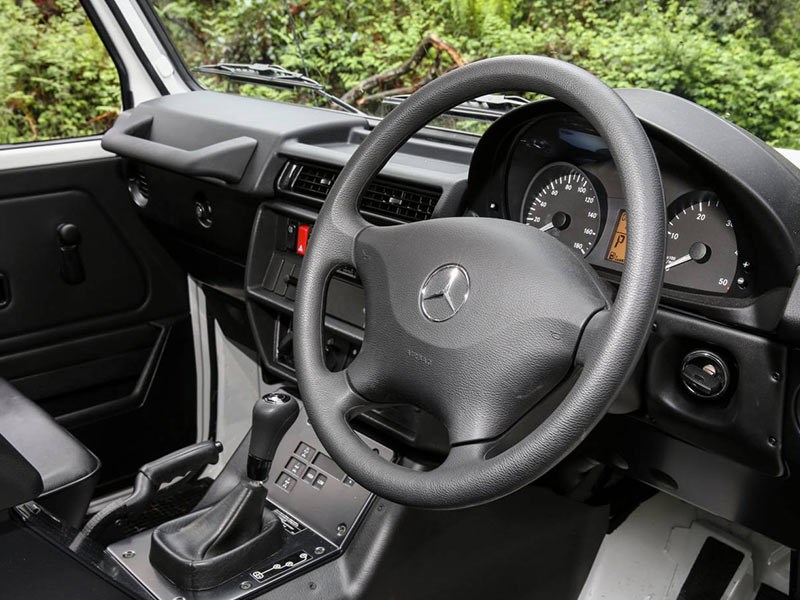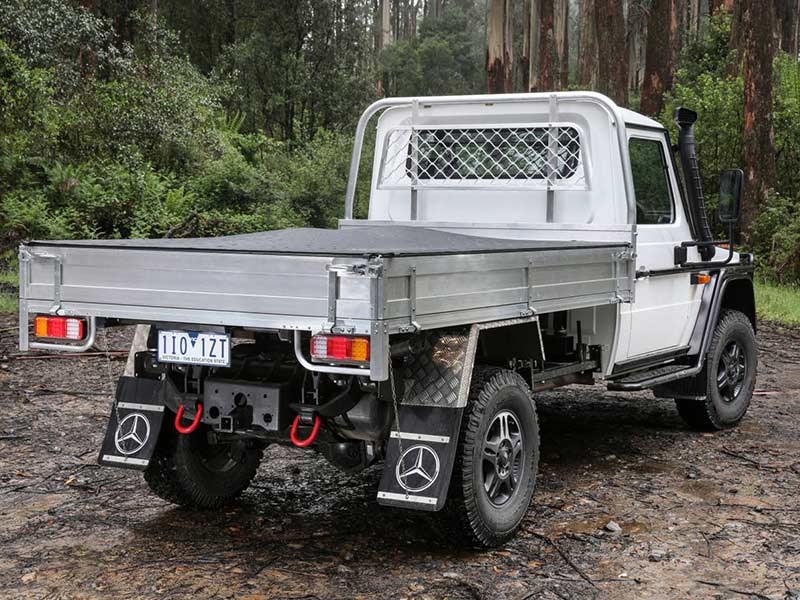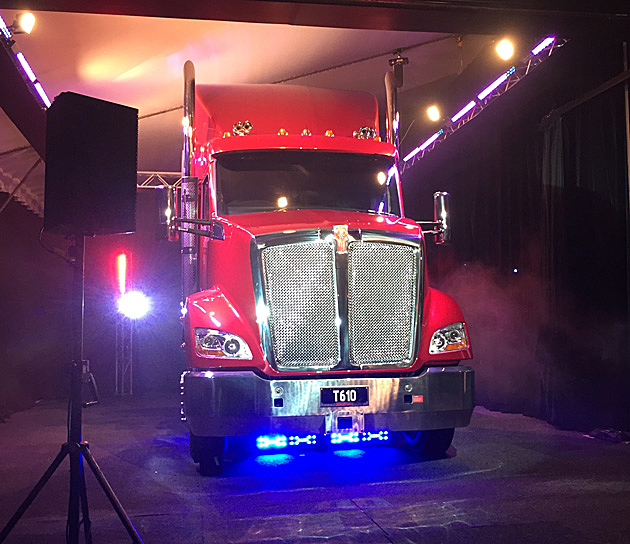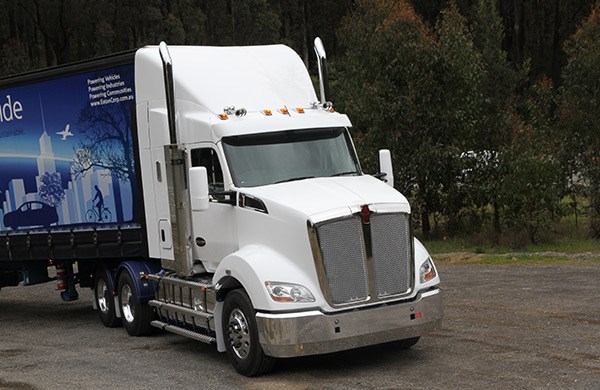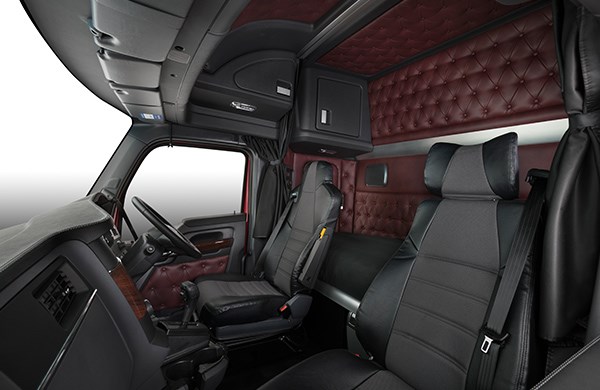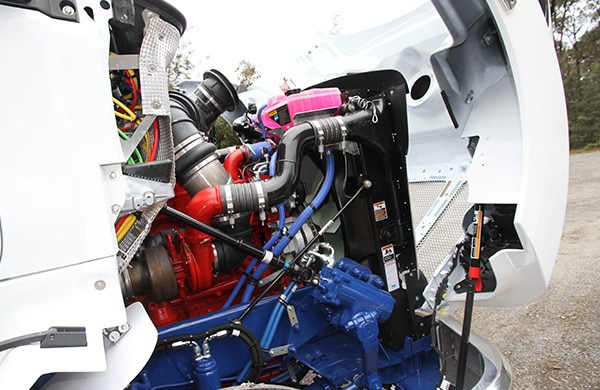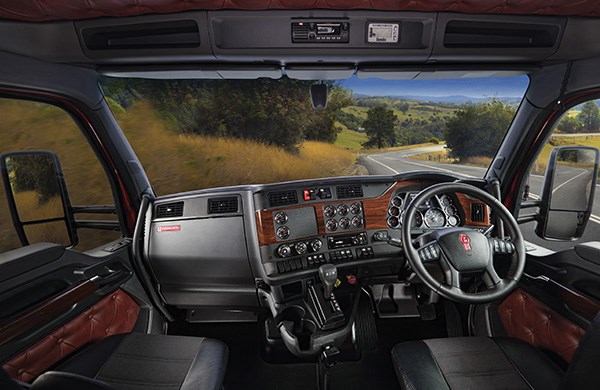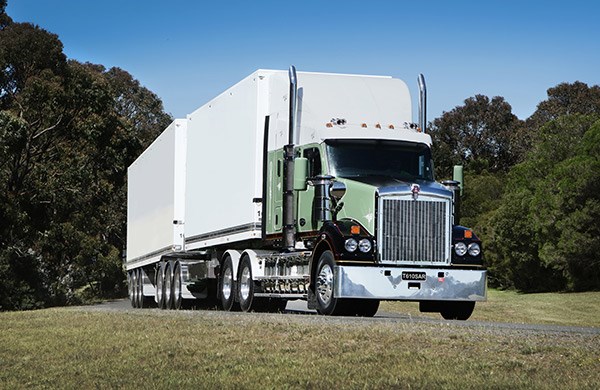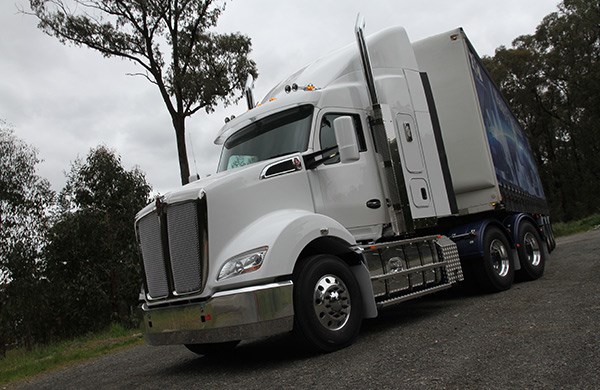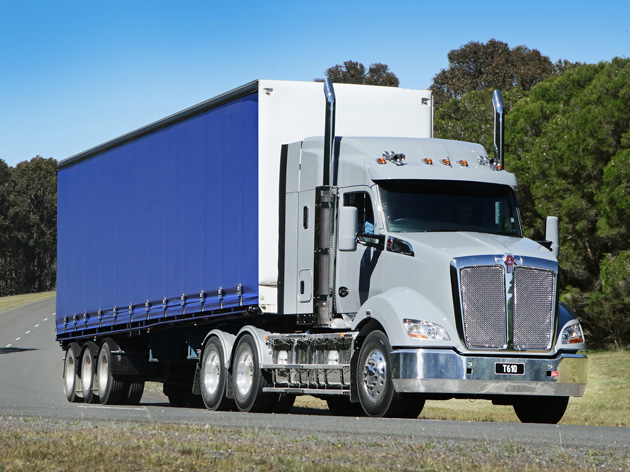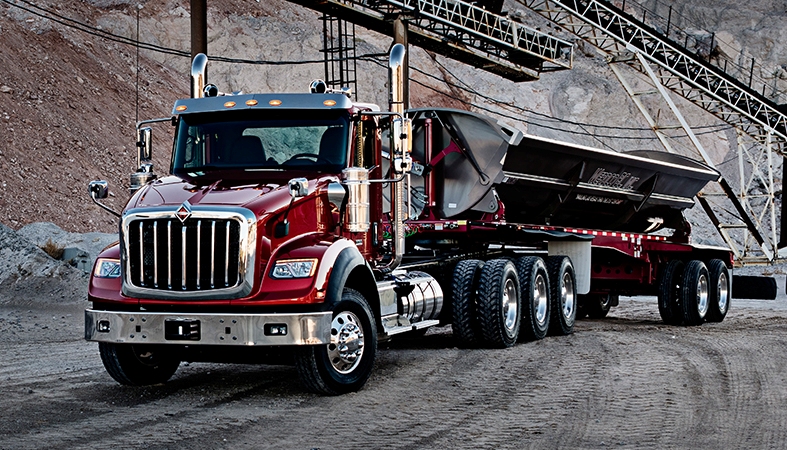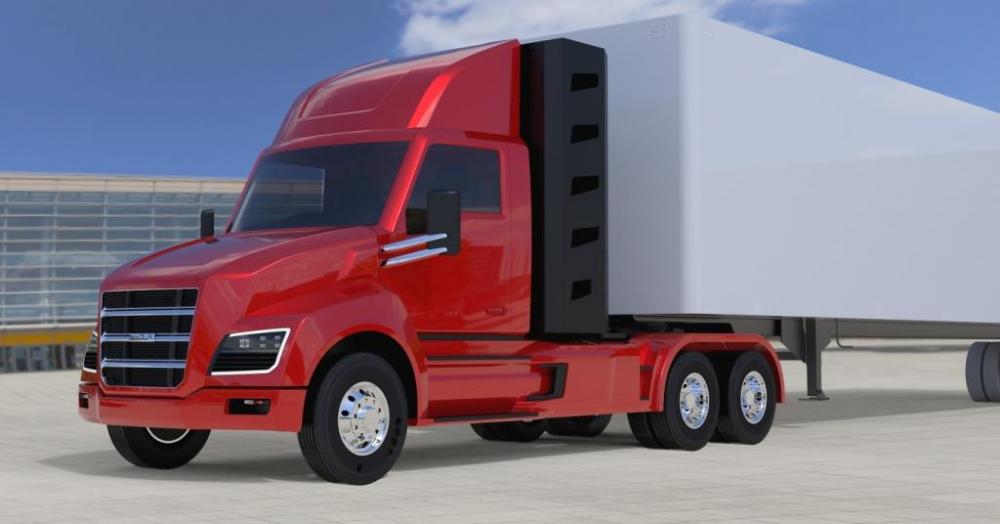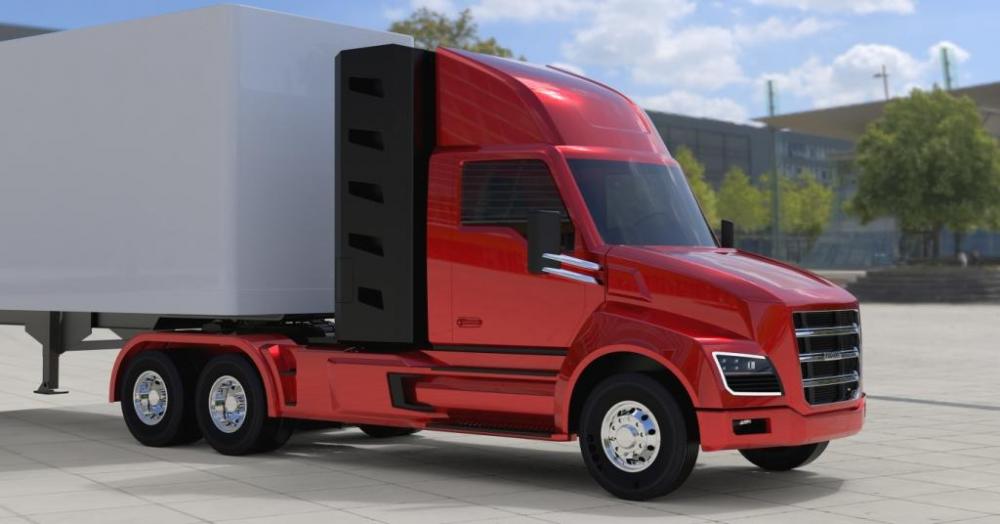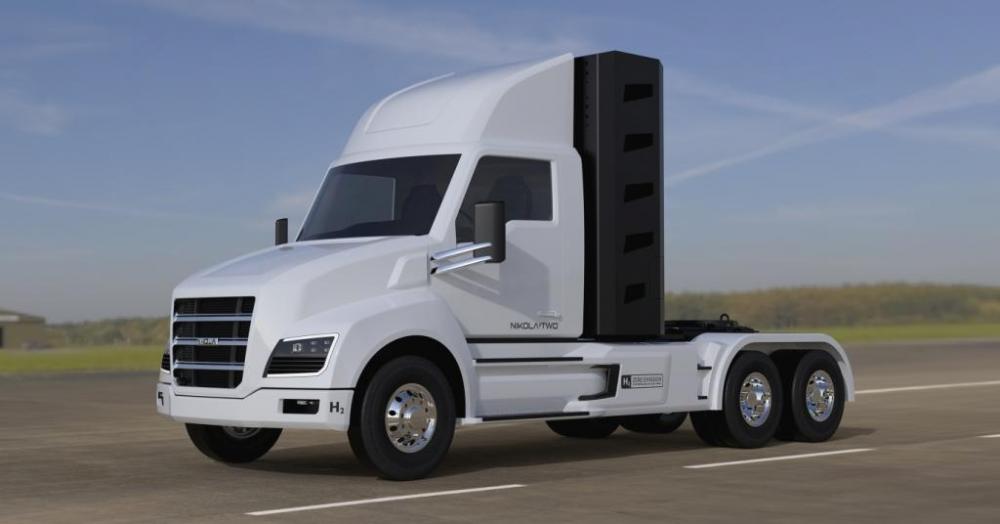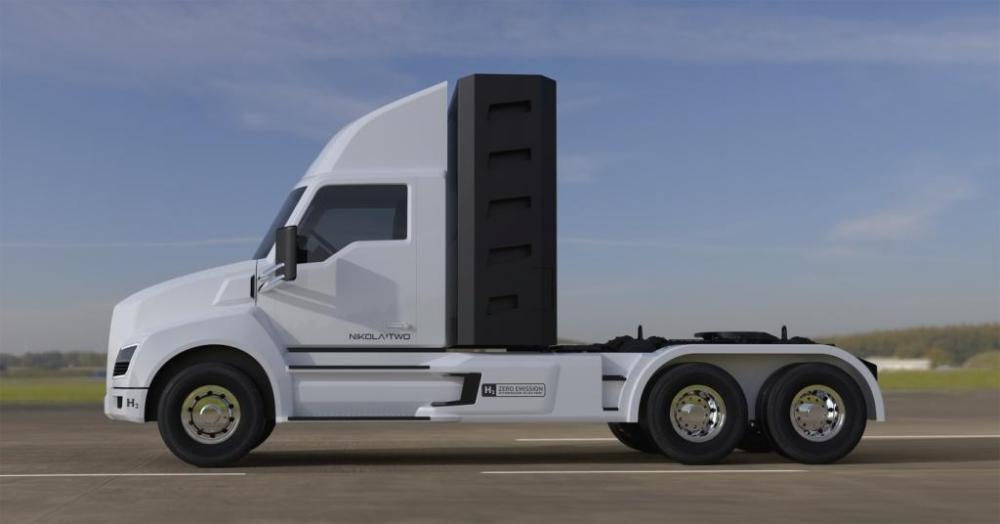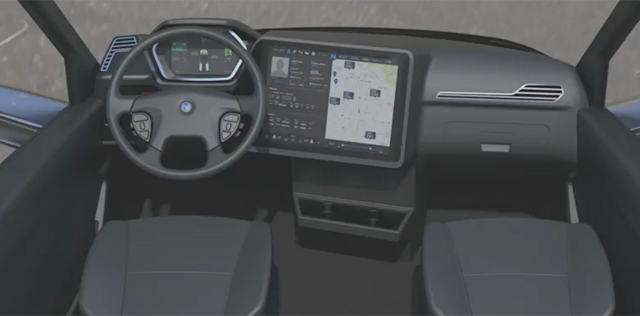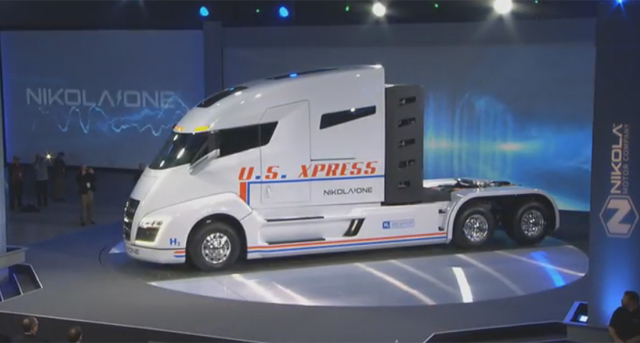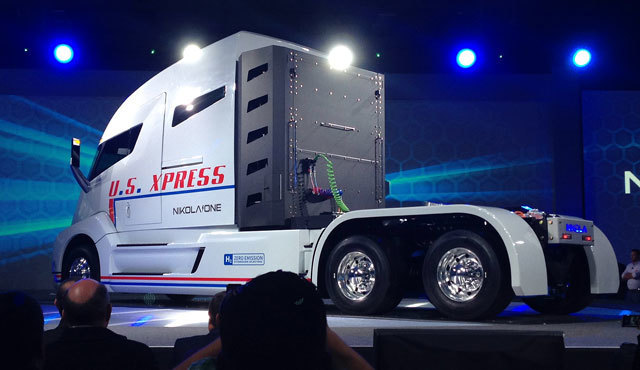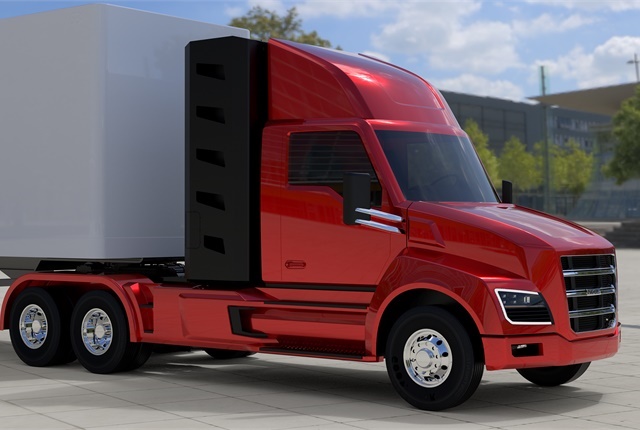
kscarbel2
Moderator-
Posts
17,893 -
Joined
-
Days Won
86
Content Type
Profiles
Forums
Gallery
Events
Blogs
BMT Wiki
Collections
Store
Everything posted by kscarbel2
-
The Washington Post / December 5, 2016 President-elect Donald Trump met Monday with former vice president Al Gore, a prominent activist in the fight against global warming. Gore was invited to Trump Tower to discuss the topic by Trump’s oldest daughter, Ivanka, who is not registered with a political party and has pushed her father to adopt some positions usually promoted by Democrats. “I had a lengthy and very productive session with the president-elect. It was a sincere search for areas of common ground,” said Gore. “I had a meeting beforehand with Ivanka Trump. The bulk of the time was with the president-elect, Donald Trump. I found it an extremely interesting conversation, and to be continued, and I'm just going to leave it at that.” Trump has repeatedly called climate change a “hoax” and said it was perpetrated by the Chinese government to take manufacturing jobs from the United States. But during a meeting with the New York Times late last month, he [flip-flopped] said he would keep an “open mind” on the issue and acknowledged that human activity might be connected to changes in the climate. The former vice president “made clear in his statements following the election that he intended to do everything he could to work with the president-elect to ensure our nation remains a leader in the effort to address the climate crisis,” said a Gore aide. While Gore was not personally close to Hillary Clinton — their relationship became strained in the wake of President Bill Clinton’s impeachment and as they each vied for Democratic donors' support during their respective political bids in 2000 — the former vice president campaigned on her behalf late in this year’s presidential campaign. In October, Gore warned that Trump, “based on the ideas that he has presented, would take us toward a climate catastrophe.” Appealing directly to millennials, he alluded to his own narrow loss to George W. Bush in 2000 in Florida and said young people could not afford to vote for anyone other than Clinton. “The world is on the cusp of either building on the progress and solving the climate crisis, or stepping back, washing our hands of America’s traditional role as the leader of the world and letting the big polluters call the shots,” Gore said. “The choice is that clear. It’s that stark.” Ivanka Trump reached out directly to Gore with an invitation to meet, although Gore did not know that the president-elect would be included. Gore was “impressed by her thoughtful comments and framing on the issue,” according to the associate, and agreed to stop by for a meeting. “She clearly is an emissary, and was on this one,” the associate said. Although Ivanka Trump has said she does not plan to take an active role in her father’s administration, she is one of the most influential people in his life and is a member of his transition team. Her husband, Jared Kushner, is one of Trump’s most trusted aides.
-
"We're going to cancel the Paris climate agreement … and stop all payments of the United States tax dollars to UN global warming programs," Trump vowed at a May speech in North Dakota. ”The concept of global warming was created by and for the Chinese in order to make U.S. manufacturing non-competitive“ — @realDonaldTrump ”This very expensive GLOBAL WARMING bullsh*t has got to stop. Our planet is freezing, record low temps,and our GW scientists are stuck in ice“ — @realDonaldTrump
-
Benjamin Solomon "Ben" Carson Post: Secretary of Housing and Urban Development (HUD) Previous experience: NONE Age: 65 (born September 18. 1951) Schooling: Carson attended Southwestern High School in Southwest Detroit, where he participated in the Junior Reserve Officer Training Corps (JROTC), reaching the rank of cadet colonel. In his autobiography, Carson claimed to have been offered scholarships to both the University of Michigan and West Point, though the latter one was disputed during Carson's 2016 presidential run. Carson graduated from Yale University in 1973 with a degree in psychology. Carson received his medical degree from the University of Michigan Medical School in 1977. After medical school, Carson completed his residency in neurosurgery at Johns Hopkins Hospital in Baltimore, Maryland. In 1983, he accepted the position of senior registrar at Sir Charles Gairdner Hospital in Perth, Western Australia, spending one year there. Upon returning to Johns Hopkins in 1984, Carson was appointed the university's Director of Pediatric Neurosurgery, specializing in traumatic brain injuries, brain and spinal cord tumors, achondroplasia, neurological and congenital disorders, craniosynostosis, epilepsy, and trigeminal neuralgia. At Johns Hopkins, Carson figured in the revival of the hemispherectomy, a drastic surgical procedure in which part or all of one hemisphere of the brain is removed to control severe pediatric epilepsy. Carson refined the procedure in the 1980s and performed it many times. In 1987, Carson gained notoriety as the lead neurosurgeon of a 70-member surgical team that separated conjoined twins Patrick and Benjamin Binder, who had been joined at the back of the head. On July 1, 2013, Carson retired as a surgeon, saying: "I'd much rather quit when I'm at the top of my game." Background: Carson was born in Detroit, Michigan. His father was a minister and later Cadillac factory worker. Both parents came from Georgia and were living in Tennessee when they met and married. Carson's mother was 13 when she married Carson's father, who was 28. Carson's mother subsequently discovered her husband had another family, for which Carson's father eventually abandoned her. Following his parents' divorce, when Carson was 8-years-old, both he and his older brother, Curtis, were raised by their mother, who worked two or three jobs at a time, usually as a domestic servant. Trump says he was “thrilled to nominate” Carson, saying the retired neurosurgeon had “a brilliant mind and is passionate about strengthening communities and families within those communities. Ben shares my optimism about the future of our country and is part of ensuring that this is a presidency representing all Americans.” Carson would oversee a budget of nearly $50 billion that provides rental assistance for more than 5 million households. Demand for that assistance is high in part because housing costs are rising faster than incomes. HUD also promotes home ownership with the Federal Housing Administration underwriting about 1 in 6 mortgages issued in the U.S. The agency also enforces federal fair housing laws. On November 15, Carson’s business manager and close friend Armstrong Williams said: "Dr. Carson feels he has no government experience, he's never run a federal agency. The last thing he would want to do was take a position that could cripple the presidency." On November 23, Carson said “After serious discussions with the Trump transition team, I feel that I can make a significant contribution particularly to making our inner cities great for everyone. We have much work to do in strengthening every aspect of our nation and ensuring that both our physical infrastructure and our spiritual infrastructure is solid.” “We appreciate Dr Carson’s willingness to take on such a challenging task at an agency that is in need of reform to better serve all Americans,” said Mitch McConnell, the Republican Senate majority leader and husband of transportation secretary nominee Elaine Chao. “I’m confident his life-long career of selfless service will be a positive addition to the incoming administration.” “Dr Ben Carson is a disconcerting and disturbingly unqualified choice to lead a department as complex and consequential as Housing and Urban Development,” said Nancy Pelosi, the Democrats’ leader in the House of Representatives. “There is no evidence that Dr Carson brings the necessary credentials to hold a position with such immense responsibilities and impact on families and communities across America.”
-
Billy, for the record, the China-assembled Buick Envision is a solid SUV (crossover), and no different in quality than if it had been assembled in he US. I personally don't like GM vehicles because the build materials (interior trim) appear to age faster than competitive brands. Like you, given the massive size of the United States and its light vehicle market, the world's second largest, I believe that light vehicle makers should produce ALL medium and high volume models on U.S. soil, slow selling niche models being the exception.
-
The all-new Kenworth T610 and T610SAR*, from Paccar Australia. http://www.kenworth.com.au/trucks/t610/ http://www.kenworth.com.au/trucks/t610sar/ * SAR - Short Australian Right-hand drive
-
Matt Wood, Trade Trucks AU / December 2, 2016 The choice of the ADF, the Benz wagon is now on the market in a 4x4 cab-chassis variant Mercedes-Benz has just launched a work focused 4x4 cab-chassis spin-off of it’s capable, yet premium-priced, 4x4 G-Wagon (Geländewagen ). The G-Wagon professional brings a 2 metric ton (4,409lb) payload (4,490kg GVM without tray) to the table as well as a formidable off-road pedigree. The Benz G-Wagon is already the light vehicle of choice for the Australian Defence Force. The G-Pro sits on 16-inch alloys and has 245mm of ground clearance and a 650mm wading depth. It uses full-time 4x4 system with front, rear and centre diff-locks. Drive to the front and rear wheels is split 50:50. For those who like to strut up and down their bonnet while in the bush, the engine lid can be fitted with non-slip material and has a load capacity of 100kg. The G-Pro also has a braked towing capacity of 2,210kg. Live front and rear axles are suspended by coil springs all round. The 3,400mm (134 inch) wheelbase of the G-Pro gives room for a 2,400mm (7.87 foot) tray which makes for easy load distribution across both axles. Under the bonnet sits a 3-litre V6 diesel that provides 135kW (181hp) at 3,800rpm and 400Nm from 1,600 to 2,000 rpm. And behind that donk sits a 5-speed auto as standard equipment. There’s also a tyre pressure monitoring system to alert the driver of any sudden deflation. A factory snorkel and cyclonic air filter are standard fit as is a bullbar and headlight and indicator protection mesh. Fuel capacity is 96 litres and electrics are powered by a dual 12 volt battery system. To keep things safe, the down and dirty Benz is equipped with a switchable ESC system that includes Electronic Brake Force Distribution and Brake Assist and ABS. It also gets driver and passenger airbag. There is no factory tray option so the G-Pro arrives sans tray. Customers will have to arrange for their own body or tray fitment. The G300 CDI has a manufacturers recommended list price of AU$119,900 (US$89,268) Including GST and LCT(this excludes dealer delivery and on road costs including tray). .
-
New Kenworth Unveiled Diesel News AU / December 4, 2016 Paccar HQ in Bayswater has seen a new Kenworth unveiled, the T610. Available in two models, the T610 and T610 SAR, this new generation of Kenworths looks set to revolutionise the truck maker’s range, here in Australia. After almost a decade of development, and the result of more than 100,000 Australian design hours and more than ten million kilometres of testing and validation, Paccar said the T610 is the single largest investment in product development the company has ever made in Australia. The new models have been designed to utilise the technology and components available from the Paccar organisation worldwide, but put it together in a particularly Australian way, to meet the trucking industry’s needs both in terms of power and dimensions as well as being able to remain durable in Aussie conditions. The new cabin is fitted to the traditional Kenworth chassis and is the coming together of three sections, an adaptation of the unitary driver’s cab used in the US, a sleeper compartment custom built at the Bayswater plant and a fibre glass roof designed and built in Australia. The 2.1 metre wide cab is almost 300 mm wider than the outgoing cab, with the engineers having also pushed the cab 300 mm forward over the engine to meet Australia’s difficult length laws. With the introduction of the Cummins X15 engine, the new trucks will be available from 450 to 600 hp. This means the two new models will have the capability to replace all of the existing T4 and T6 range from Kenworth. Not that the existing models will be going away anytime soon, Kenworth will be building old and new models, side by side on the production line for the time being. Kenworth says the new cabin is centred entirely around the needs of the driver. Incorporated into the design is greater foot space, more standing room and storage, wider walkthrough access between the seats and more expansive door and windscreen glass, providing space, visibility and ergonomics never before seen in Kenworth’s suite of Australian made trucks. “The core of this project was about building a bigger cab but it’s really about creating the ultimate driver environment,” said Brad May, PACCAR Australia’s Director of Sales and Marketing. “A good driver environment leads to better all-round driving performance, safety, efficiency and productivity.” .
-
Exclusive Report: Kenworth launches new T610 Steve Brooks, Owner/Driver / December 4, 2016 Kenworth’s new T610 is the biggest and most expensive truck development program ever undertaken in the company’s Australian history. From Kenworth headquarters and behind the wheel, Steve Brooks files this detailed report In the 40 years and more since Paccar first started building Kenworths at its renowned Bayswater (Vic) facility, there has been nothing quite like the new T610. Sure, the first T600s in the mid-80s revolutionised the world of conventional truck design but in the 30 years since then, the actual structure of Kenworth conventionals with their 1.83 metre wide cab has changed very little. Until now! In fact, senior Kenworth insiders say there is nothing in Paccar’s Australian history to even remotely match the investment made in the T610 with its 2.1 metre wide cab. Word has it that by the time trucks start rolling out of Bayswater in February 2017, around $20 million will have been spent on an entirely new conventional truck engineered and built to the specific requirements of Australia and surrounding regions. Some perspective on the extent of the investment in the T610 is perhaps best understood by the fact that the entire range of current 09 models (T409, T609, T909 etc) plus the radically revamped K200 cab-over all came to life for less than half of what will be spent on bringing the T610 into existence. "This is the biggest single investment ever made in new Kenworth product in this country and outside Australia there is nothing like this truck anywhere in Paccar," said a proud Brad May, Paccar Australia sales and marketing director. "We basically took what we could from Paccar’s global platform but no one should be in any doubt that the engineering and design of the finished product are all ours, all done in Bayswater." Major cost items like the firewall and floor structures as well as a completely new and strengthened dash are uniquely Australian, fully engineered at Bayswater to achieve the structural durability and design goals deemed essential for this market. "Our parent company obviously had to approve the investment and we certainly utilised Paccar’s facilities in the US in the durability validation process, but the engineering design is totally ours," Brad May emphasised. "This is a truck engineered in Australia, for Australia. Absolutely!" While external styling is definitely different and comes with a number of ancillary features adapted from the inventories of both Kenworth and Peterbilt in the US, the T610 is unquestionably an exercise in substance over style. Most notably, the cab is wider, taller and in sleeper form, vastly more spacious and liveable than the long-serving cab of Kenworth’s current conventional range. Unlike existing T4 models, for example, sleeper versions of the 610 provide full standing room from the seat to the sleeper and there’s little doubt this fact alone will be a major attraction for owners and drivers alike. For its initial assault on the market, Kenworth’s new T610 will immediately supersede the hugely successful T409 and its SAR derivative, but only those powered by the 15 litre Cummins ISXe5 engine. The 610’s first foray into the market will see it offered in set-back and set-forward (SAR) front axle configurations, initially as a day cab or with an 860 mm (36 inch) sleeper. Of course, further sleeper options will be progressively added. Meantime, ‘409s punched by Paccar’s own 13 litre MX engine will for the time being continue with the current 1.83 metre cab and existing sleeper options. It’s understood, however, that development work on an MX-powered version (T410) is already well under way. As for other conventionals in the Kenworth range, the 2.1 metre cab is almost certain to be applied to all models in due course. The T610 evolved from the conceptual possibilities provided by a US$400 million Paccar development program in the US around 2008 which ultimately saw the release of new Kenworth and Peterbilt models, notably the T680 and Pete 579. Despite their fiercely held independence, the new Kenworth and Peterbilt models shared a new 2.1 metre wide cab. Realising the obvious potential of the wider cab, Australia’s product planning team were soon in touch with their US counterparts investigating the possibilities of a wider righthand-drive cab for the Australian market. As Brad May remarked, it was a long and highly detailed exercise and while a wider cab was seen as a ‘no-brainer’ for the next generation of Kenworth product, building a truck capable of enduring Australia’s operational and regulatory requirements was an all-consuming task. Meantime, the hugely successful T409 with the Cummins 15 litre engine was seen from the outset as an ideal first candidate for the new cab. Evolving from the T600, the T4 family has grown to become the most versatile range in the Kenworth armoury. There are, however, issues associated with the installation of a big bore engine into the relatively narrow confines of the existing 1.83 metre cab. Chief among those issues are a narrow driver’s footwell, awkward access to the bunk due to limited space and lack of standing room between the seats, complex steering geometry, and poor service access to the rear of engine, particularly the 15 litre Cummins. Yet as a few hours behind the wheel of a pre-production unit quickly verified, the 2.1 metre cab of the T610 dramatically diminishes all these issues and in the case of steering geometry, completely negates concerns about complexity thanks to a straight shaft from the cab to the chassis-mounted steering box. The T610 also provides a substantial (30%) increase in space around the driver’s footwell, the gap between the seats has been significantly opened and with a rise in the height of the bunk, there’s now room for an optional slide-out fridge. It’s actually amazing what Kenworth has achieved with an extra 270 mm between the B-pillars. Meanwhile, floor height of the cab has been lifted by around 75 mm, adding another step for the climb in and out. However, the advantages of the higher floor are considerable. Perhaps the greatest benefit is that it has allowed the cab to be moved forward to create a bumper to back-of-cab (BBC) dimension of just 112 inches on the day cab model, giving the newcomer particularly strong appeal for any number of length-critical applications. By comparison, the current T409 has a BBC of 116 inches. Stayin’ Cool Importantly, the higher stance of the cab allows greater airflow underneath to enhance cooling efficiency and considerably improves service access to the rear of the engine. Furthermore, the taller cab also improves visibility though some drivers may rue the fact that the top of the KW ‘bug’ is no longer visible and therefore unavailable as a line of sight to the edge of the road. Kenworth insiders, however, are quick to point out that the bug remains visible over the snout of the SAR version. Still, it’s almost certain some operators will question the cost-effectiveness of the T610’s single-piece windscreen over the two-piece ‘screen available on current T4s. For now though, Kenworth says it will be sticking with the single ‘screen. However, it’s highly unlikely anyone will question the mirrors. Adapted from US models, they’re mounted on low slung dual arms and offer little visual interference on the approach to roundabouts and the like. They’re also incredibly strong as a Kenworth executive demonstrated by swinging his full weight from the mounting arm. Under the hood, the T610 uses an aluminium radiator and an assertive Brad May says the new model has no difficulty cooling 600 hp at high loads and high ambient temperatures. As for durability of the aluminium cooler, May says there have been no issues with the aluminium radiator used in MX-powered 409s and given the amount of testing done on the T610, Kenworth is entirely confident there won’t be any dramas with the new installation. Furthermore, Kenworth is adamant that despite the bigger cab there has been no increase in tare weight due in large part to the use of aluminium wherever possible, not least in the radiator and the majority of the cab shell. It’s worth mentioning, however, the roof of sleeper cab models is made of a strong yet lightweight composite material. Typically, quality and strength were high on the priority list with extensive engineering and test procedures put in place from the outset. One of those procedures was to ‘wire’ a T650 operating in roadtrain roles with Queensland-based livestock specialist Ross Fraser to electronically record a ‘drive file’ of real world and often severe road conditions for testing and engineering validation. This data platform was the critical factor in creating what Brad May says is "The strongest cab we’ve ever built," with test cabs enduring three times the normal cycle of shaker tests. "No Kenworth cab has undergone greater durability assessment than the T610 and the whole structure stood up to everything put to it. Meanwhile, back in Bayswater the cab was subjected to ECE R-29 crash standards and again came through with flying colours according to Brad May. Likewise, the interior layout is a uniquely Australian design. For example, between the firewall and an injection moulded dash fascia which is said to be double the thickness of US designs, a totally new heating, ventilation and air-conditioning system was created for Australian conditions. Additionally, the structural integrity of the dash and its underlying components are founded on what Kenworth describes as a purposely designed cross-car steel beam stretching across the width of the dash. "A huge amount of time, effort and obviously money went into the dash and all the components attached to it. It was a complex exercise but we knew it had to be absolutely right," Brad May remarked. Visually, the dash is decidedly different but in typical Kenworth fashion, strong on function and form. The initial design sees a woodgrain fascia surrounding traditional gauges, with an optional multi-function touchscreen in the pipeline. Lower down and within relatively easy reach is a line of switches to a wide range of functions such as engine brake, diff lock and the like. Meanwhile, switches for cruise control, audio, and menu functions for an LCD info display directly in front of the driver are mounted on the arms of a comfortably padded steering wheel. Most prominent gauges are obviously the speedo and rev counter under the LCD screen. On each side are well positioned gauges and Kenworth points out that up to 18 gauges can be specified in the T610. Putting practicality first and certainly bucking the trend in automotive design are exposed fasteners holding the dash in place. "The trend in automotive styling these days is to hide screws and fasteners," Brad May explained. "But if something needs attention behind the dash, access is made a lot easier and there’s much less chance of damage by simply undoing a few easily reached screws to get behind the dash fascia." Surprisingly, cup holder trays on the lower edge of the dash centre differ between automated and manual transmissions. With a manual stick, the cup holder is neat and unobtrusive but automated versions have the ‘cobra’ shift controller mounted on a much larger assembly which extends notably into cab space. In the lead-up to the launch of the T610, the first field evaluation unit went to work with high profile fleet McColl’s in June and over following months another four units – day cab and sleeper versions – hit the highways with various operators. Kenworth insists that by the time production trucks start rolling out of Bayswater, at least 11 pre-production T610s will be involved in ongoing field trials. Trial results have been extraordinarily positive says Brad May, adding that the years of careful planning, local engineering and design experience, and brutal test procedures have driven high levels of confidence that Kenworth’s latest will also be its greatest. "The T610 is home-grown and we are already incredibly proud of what we’ve achieved with this truck," he said earnestly. "Yes, we’re extremely confident but then, I think we have good reason to be. "After all, the T610 is the latest evolution of what we’ve been doing in this country for 40 years. Building trucks for Australia." .
-
New Kenworth T610 launched in Melbourne Prime Mover Magazine / December 5, 2016 After almost a decade of development, Kenworth has officially launched the new T610 model during a spectacular ceremony in Melbourne on the weekend. The result of more than 100,000 Australian design hours and more than ten million kilometres of testing and validation, the T610 was specifically developed for the local road transport market, according to Brad May, Paccar Australia’s Director of Sales and Marketing. “The T610 is the single largest investment in product development the company has ever made in Australia,” he said. “It represents everything a Kenworth should be in terms of durability, reliability and safety. Yet the really noticeable product improvements are the superior space, ergonomics and driver comfort and control.” Based on a tried and proven chassis, the T610 features an entirely new cabin that is centred around the needs of the driver, May elaborated. “The core of this project was about building a bigger cab but it’s really about creating the ultimate driver environment. “A good driver environment leads to better all-round driving performance, safety, efficiency and productivity.” At 2.1m, the new cab is almost 300mm wider than the outgoing one (T409, ed.), with the engineers having also pushed the cab 300mm forward over the engine to meet Australia’s stringent length laws and make the T610 more attractive for the contested fleet market. “Incorporated into the design is greater foot space, more standing room and storage, wider walkthrough access between the seats and more expansive door and windscreen glass, providing space, visibility and ergonomics never before seen in Kenworth’s suite of Australian made trucks,” May summarised. While all Kenworth trucks are tested and validated to the same standards, the benchmark for the T610 has been elevated even further, Kenworth’s Engineering Project Design Manager, Ross Cureton explained during the launch event on Saturday. “The T610 has been tested three times more than any Australian Kenworth truck that’s gone before it,” he shared. “All Kenworth trucks would normally run on a standard, 60-day shake test program, where the physical cab is mounted on a simulation machine, as if driving on its chassis, to see if it survives. We put the T610 cab through three of these cycles, which acts as if it were being subjected to the vibrations and forces of the worst case road conditions found in Australia.” Cureton said despite the multiple, at times violent simulations, the new Kenworth cab passed with flying colours. “I’ve been at Kenworth for 23 years and the T610 shake test has proven it to be the most durable cab we’ve ever tested, and we wouldn’t want it to be any less, given the Australian market and our collective expectations.” As part of the new cab, Kenworth also developed a new, automotive quality dashboard with improved access to the air conditioning (HVAC, ed.) system and tool free access to electrical circuit protection, plus visually apparent fasteners in the dash to assist further access if required. Under the hood, the new T610 will be powered by Cummins’ X15 Euro V engine with Advanced Dynamic Efficient Powertrain (ADEPT) technology – a term to summarise a whole suite of electronic features that interact with the optional Automated Manual Transmission (AMT), dynamically adapting to operating conditions to enhance fuel economy with no impact to productivity. The T610, which also come in a SAR version, will be offered in either a day cab or a 860mm sleeper to make it suitable for virtually any application – including maximum payload 26m B-double work. The set forward front axle (SAR) version will also make it suitable for 19m single trailer, as well as tipper and dog applications. On the safety front, the 610 will be available with state-of-the-art collision avoidance and mitigation technology, “including active cruise with braking and lane departure warning working in harmony to take safety to the next level”, as Kenworth put it. .
-
Absolutely superb ad. Why can Ford U.S. talk to the audience intelligently like that? The dumbed down ads get old real fast.
-
The story behind Ford Truck's 13L "Ecotorq" engine
kscarbel2 replied to kscarbel2's topic in Trucking News
Ford impresses. I speak with Ford-Otosan people on a regular basis. The amount of ambition and passion for Ford Trucks among the people there is absolutely amazing. A solid engine, currently offered in 420hp and 480hp versions. Ought to offer a 450hp rating as well. Setting it up to meet Euro-6 or EPA2010 is not problem using an SCR/cooled EGR combination. Purely for Euro-6,, an SCR-only configuration like Scania and Iveco offer is also feasible. Note the air-to-water intercooler (aftercooler) mounted up front. I suspect that, with the current cab, there wasn't space for an air-to-air intercooler. So this temporary until the new, larger cab arrives. Ford was itself behind the creation of the 7.3 and 9.0-liter in-line sixes. The 10.3L and 13L (actually 12.7) were acquired from Fiat Powertrain Technologies (FPT). The 7.3 and 9.0 can meet Euro-6, so I'll say they can be adapted to the close equivalent EPA2010. -
Donald Trump steps up warnings to US business over offshoring The Financial Times / December 4, 2016 President-elect threatens tariffs of 35% on goods produced by units abroad Donald Trump has stepped up his warnings that US companies will be punished for shifting production overseas. The US president-elect on Sunday reinforced a campaign pledge that he would impose a punitive 35 per cent tariff on US companies that import products from their factories abroad, a step that would roil global supply chains and meet fierce resistance from business. In a series of early-morning tweets, he told companies considering offshoring that his plans would “make leaving financially difficult”, adding: “Please be forewarned prior to making a very expensive mistake!” China is one of the top offshoring destinations for US companies. Vice president-elect, Mike Pence, said Trump feels that “we’ve just been losing to China far too long economically”. “The American people have elected a president who, not just with regard to China, but with other countries around the world, and even in our hemisphere, [is] going to put American workers and American jobs first,” said Pence. In a sign of the support he is receiving from countries not usually seen as the US’s allies, Russian President Vladimir Putin on Sunday called Trump a “clever” man who would soon get to grips with the weighty duties of his new job. “Since he’s achieved success in business, that suggests he is a clever man,” said Putin. “So if he’s a clever man, that means he’ll quite quickly grasp another level of responsibility. We assume that he will act from these positions.” Big US businesses have welcomed Trump’s plans to cut taxes and regulation but are upset by his hostile stance on free trade. Trump didn’t explain how the tariffs would be implemented and whether they would apply to all imports or only those from US-owned factories overseas. It was also unclear whether they would affect existing or only new offshore production. Pence on Sunday said the incoming Trump administration had already secured agreement from Mexico’s president Enrique Pena Nieto that it would renegotiate the NAFTA free trade agreement. “[Trump is] going to put on the table all the tools that are going to take away the advantages of companies that for far too long have been pulling up stakes, leaving American workers behind and then creating products, shipping them back into the [US],” Pence said. .
-
Commercial Motor TV - sponsored by DAF Trucks / December 2, 2016 .
-
Ford-Otosan Press Release / December 2, 2016 Watch how 13-liter Ford "Ecotorq" engines come to life in at the Ford-Otosan İnönü engine plant. At Ford Trucks, we’re serious about trucking. It's why we designed our Cargo heavy truck range from the ground up to meet your needs and expectations. See your authorized Ford heavy truck dealer today for details, or visit the global Ford heavy truck website at https://www.fordtrucks.com.tr/ .
-
Renault Trucks bringing Urban Lab 2 concept truck to Lyons show
kscarbel2 replied to kscarbel2's topic in Trucking News
Renault Trucks delivers a D WIDE CNG with horizontal exhaust to the STAF haulage company Renault Trucks Press Release / December 2, 2016 Renault Trucks has delivered its first Euro 6 D WIDE CNG with horizontal exhaust to food and refrigerated transport company STAF. This model which is specially designed for distribution and can operate on either natural gas or biogas will be released in early 2017. The Staf food and refrigerated transport company was the first to receive a Renault Trucks 19-tonne Euro 6-compliant D WIDE CNG with horizontal exhaust. This model will be released in early 2017. The Renault Trucks D WIDE CNG Euro 6 enjoys the same chassis and body-mounting possibilities as its diesel counterpart since there is no vertical exhaust to integrate between cab and trailer. Its Euro 6 compliant NGT9 6-cylinder engine displaces 8.9 litres and delivers a power output of 320 hp. It is designed to run on both natural gas and biomethane (biogas). These features make the D WIDE CNG the ideal choice for urban delivery businesses operating at controlled temperatures. The low entry cab with its two-step access is convenient for regular deliveries; the tight turning radius improves manoeuvrability and the Allison automatic gearbox lets the driver concentrate on the road ahead. The D WIDE CNG also boasts a hydraulic retarder which, together with the automatic gearbox, extends the lifespan of the entire system, especially the brake pads. The 19-tonne 4x2 rigid truck supplied to STAF is fitted with a 51 m3 refrigeration unit with an electrically powered Frigoblock system. This means less noise and lower emissions from the refrigeration system. The Renault Trucks D WIDE CNG with horizontal exhaust scheduled for launch in 2017 will include new features such as cruise control, pneumatic front suspension as well as the various fittings of the D WIDE cab. The D WIDE CNG with horizontal exhaust will take pride of place on the Renault Trucks stand (hall 2, aisle J, stand 117) at Pollutec, the international exhibition of environmental equipment, technologies and services, held at Lyon’s Eurexpo exhibition centre from November 29 to December 2, 2016. -
Associated Press / December 3, 2016 Donald Trump is taking on another Indiana manufacturer that has plans to let go of workers and move operations to Mexico. Late Friday, Trump tweeted: "Rexnord of Indiana is moving to Mexico and rather viciously firing all of its 300 workers. This is happening all over our country. No more!" Rexnord operates a bearings factory near the Carrier plant in Indianapolis, where Trump on Thursday touted a deal to save hundreds of jobs in exchange for about $7 million in state tax breaks and grants. Trump told workers at the Carrier plant, "Companies are not going to leave the United States anymore without consequences." ----------------------------------------------------------------------------------------------------------------- The Wall Street Journal / December 5, 2016 Donald Trump criticized a second U.S. manufacturer for its plans to move a factory from Indianapolis to Mexico, as the president-elect took to Twitter over the weekend to press his attacks against American companies shifting production abroad. “Rexnord of Indiana is moving to Mexico and rather viciously firing all of its 300 workers,” Mr. Trump wrote late Friday. “This is happening all over our country. No more!” Rexnord, which is based in Milwaukee, intends to move production of the industrial bearings it makes in Indianapolis to Monterrey, Mexico, according to its employee union. The move, expected by the middle of next year, would eliminate about 300 jobs. Rexnord refused to comment. Shares of Rexnord have tumbled about 8% from Wednesday’s close. Early Sunday morning, Mr. Trump sent out a series of tweets reaffirming his position that companies that move production abroad and fire workers in the U.S. will face consequences, such as a 35% import tariff. “Please be forewarned prior to making a very expensive mistake!” he wrote. He encouraged business leaders to explore relocating factories between states and negotiating for tax breaks, a strategy that some state officials fear will escalate an arms race of incentives. Asked Sunday if Trump was going to intervene at Rexnord and other companies, Vice President-elect Mike Pence said Trump “will make those decisions on a day-by-day basis.” Carrier, a unit of United Technologies Corp., still plans to shift 1,300 jobs from Indiana to Mexico. On Friday, Ford CEO Mark Fields said he still going to relocate small car production to Mexico despite repeated criticism from Trump. Chuck Jones, president of a United Steelworkers local that represents Indianapolis workers at Carrier and Rexnord, said Friday he was grateful for Mr. Trump’s intervention at Carrier but added that he wasn’t optimistic other companies will shelve plans to move manufacturing abroad, even if they are offered state or federal incentives. “There’s not enough taxpayer money to reward companies not to leave the country when we’re competing with $3-an-hour wages in Mexico,” Jones said. The steelworkers union said the hourly wages at the Rexnord plant, which currently range from $18.82 to $30.81, would have to drop below the U.S. minimum to match the company’s estimated cost savings in Mexico. Trump’s representatives were in touch with Rexnord as recently as mid-November. The closing of the Indianapolis plant is part of Rexnord’s plan to counter slow sales by cutting $30 million in costs and as much as one-quarter of its factory space globally before the end of March. North America is expected to bear the brunt of the cuts. In its fiscal year ended March 31, Rexnord’s sales fell 6.3% to $1.92 billion. Its profit sank 19% to $67.9 million. Rexnord is far smaller than United Technologies, a group with nearly 200,000 workers and big defense projects. Rexnord, which produces ball bearings, gears, plumbing valves and other industrial products, had 7,700 employees, including 4,200 in the U.S., as of March 31.
-
Jim Park, Today’s Trucking / December 2, 2016 Drivers of severe-service vocational trucks will likely look back on 2016 as a year that made their jobs much easier. It wasn’t a banner year for growth in many industry segments, but truck makers still managed to produce some attention-grabbing upgrades to existing product lines. This year saw the introduction of a new -lightweight 11-liter engine for the -vocational side that offers a very nice power-to-weight ratio with ratings ideal for the market. And we even got a couple of brand new models to cheer about: the MBT 40 off-road severe-service chassis from Western Star and Navistar’s HX line. Introduced in February, the HX series will replace the PayStar lineup as of January 2017. The HX is the first new truck introduced by Navistar since 2010. PayStar production will end this month. “We are looking at the HX series to rejuvenate the market,” said Chad Semler, director of product marketing for severe-service trucks. “We will offer four base models – two with short hoods in set-forward and set-back axle configurations for our N13 engines, along with two long-hood versions, again set-forward and set-back, for the Cummins X15 engines.” The WorkStar series will live on, giving the lighter side of the market a host of options and configurations. The HX is the top-of-the line chassis for the heavy side of the business, seemingly custom-designed for Canadian service. “Just under 50% of the orders from the first round of HX production went to Canada,” Semler said. “Pent-up demand for this extreme-duty platform was very high and our Canadian dealers were really excited about the truck. It’s proving to be very popular in Canada.” In May, Western Star disrupted the severe off-road market, introducing its Extreme Duty (XD) Off-road package and the new the MBT-40 Transformer lineup, both built on the 6900 Model chassis. The Multi-Body Transformer can quickly change from one fully functional in-cab controlled body application to another, like switching from a water tank to a dump body. The Western Star product launched at a time when the market was reeling from the collapse in oil prices, and a glut of underutilized equipment was being sold off at auction. Still, Western Star reports a few new developments to the product since May, including a new hydraulic control system that adds even more plug-and-play options for a variety of applications, and an 85-metric-ton configuration that uses a new Link suspension. There’s also a lighter version in the works, the MBT 25, that offers the same quick-change -flexibility in a smaller package. That truck will make its first appearance at the spring construction shows in Las Vegas. “These trucks will revolutionize the market,” said John Tomlinson, Western Star’s XD and vocational sales manager. “It used to be a two-week process to swap out a body, and in Western Canada, where you don’t use water trucks in the winter, a truck can sit for three to four months. We can make that switch in less than 30 minutes, keeping that asset working year-round with a fraction of the transition cost and downtime.” Freightliner’s 122SD model, like its big Western Star brother, has felt the impact of the downturn in oil and construction markets, but the evolution continues. JP Davis, market segment manager for Freightliner Trucks, says they have recently added a 23,000-pound steer axle option for tractor is in the heavy-haul environment. “Canada is a large part of the market for this truck, and we’re anxiously waiting for the oil field and construction markets to get back on their feet,” Davis said. Kenworth recently expanded its T880 lineup, adding a set-forward axle option. The T880S makes available front axle ratings from 14,600 to 22,800 pounds. Single, tandem, or tridem drive axles and a variety of factory-installed lift axles are among a range of options available. The T880 and T880S come standard with the recently uprated 12.9-liter Paccar MX-13 engine, which now cranks out up to 510 horsepower and 1,850 lb-ft of torque. For weight-sensitive applications, the 10.8-liter PACCAR MX-11 engine, introduced last fall and put into production early this year, is 400 pounds lighter than the MX-13. The MX-11 offers up to 430 horsepower and 1,550 lb-ft of torque and is well suited for many on- and off-road applications such as ready-mix trucks. Peterbilt now offers the Hendrickson HMX Suspension weight-bias spring package for its Model 567. “This load spring option is intended to help adjust for vehicle lean conditions that may be induced by a side-to-side weight bias from certain bodies and mounted equipment, such as those used in refuse, concrete mixer, and well driller applications,” said Charles Cook, marketing -manager for vocational products. And, new to a market segment we -seldom cover here, is Peterbilt’s Model 520, a Low-Cab-Forward dual-control chassis for refuse collection and concrete pumper applications. “The Model 520 features two nearly identical work environments so drivers can seamlessly and safely operate from the left- or right-hand side, including dual controls for the parking brakes, HVAC system and stereo,” said Cook. New offerings from Mack this year include the latest version of the 11-litre MP 7 engine with the updated wave piston design and a common-rail fuel injection system to reduce emissions and improve efficiency. It’s also about 50 pounds lighter than the previous version. Mack also rolled out the uprated mDrive HD 14-speed Automated Manual Transmission with two crawler gears that will really help folks that pour concrete curbs and sidewalks. “The integration with the Mack mDrive HD 14-speed allows for seamless communication among components so that the vehicle is always in the right gear without the driver having to manually shift, reducing driver fatigue and increasing safety. It also provides a deep ratio of 32:1 in the lowest creep gear to facilitate low-speed functionality such a curb pouring when needed,” said Tim Winkle, Mack construction product manager. “Vocational trucks, particularly these severe service models, are interesting and challenging to work on,” said John Felder, product marketing manager at Volvo. “The Canadian market is completely different from Edmonton to Quebec City. Every time we build something special and send it out into the field, particularly when we have a good partnership with the body builder and the owner, it’s like sending one of your kids off to school for the first time.” .
-
Nikola seeks to create “all-inclusive” truck model Sean Kilcarr, Fleet Owner / December 2, 2016 Its new Nikola One sleeper tractor, expected to be in production by 2020, will include one million miles of fuel, maintenance service, and even a freight matching service in the purchase price. During the unveiling of the new Nikola One hydrogen fuel cell powered all-electric Class 8 highway tractor during a media event held here the world headquarters of Nikola Motors Co., Trevor Milton, the company’s president and CEO, told Fleet Owner he also expects it to be the first “all-inclusive” model – incorporating fuel, maintenance, even a freight-matching service, into the purchase price. “Everything is going to be built right into the truck, just like an iPhone,” he explained. “We’re going to consolidate a lot of the industry’s problems; rather than attack issues individually we’re going to create solutions through a single package.” Milton referred to this as a “white glove” approach to trucking. “It’s all about giving a driver all the tools they need to get the job done,” he said. During the unveiling of the Nikola One prototype – a truck Nikola expects will go into full production by 2020 – Milton listed all of the items that will be incorporated into its sticker price: Ryder System will sell, service, and provide warranty coverage for the Nikola One through its 800 locations throughout the continental U.S., Canada and Mexico, with “different leasing programs” planned as well; Roughly one million miles worth of hydrogen for the vehicle’s fuel cell will be provided at no cost to Nikola One customers through a network of 364 refueling locations Nikola is currently constructing; A freight matching service called Nikola Shipments will be “pre-loaded” aboard the vehicle – one reason why the company is incorporating a 21-in. computer screen into the dashboard. Max Fuller, chairman and CEO of TL-carrier U.S. Xpress, told Fleet Owner he “likes what he sees” so far from this “all-inclusive” approach taken by Nikola and believes the Nikola One could be a “game changer” for the trucking industry. “The highest risk for trucking companies is fuel prices,” he explained. “We don’t control them and they lead to so much [freight] rate volatility. Going to an all-electric truck would get us out of that cycle.” Fuller added that Nikola “didn’t skimp on anything” in terms of safety and driver comfort features and believes the zero-emission footprint of the Nikola One – its only tailpipe emission is water vapor – will appeal to the Environmental Protection Agency (EPA). “Every four or five years it seems we get hit with some new environmental rule that leads to equipment changes, then problems and downtime,” he said. Going to an all-electric truck “will get us away from that volatility as well,” Fuller noted. He said drivers should like this new truck as well as it is quiet, has more “instant power” so it can keep up with traffic and climb hills, with a lot more stopping power as well. “A lot of driver-friendly features are built into this truck; it’s very proactive,” Fuller said. “This is what we need to make the driver’s job better and the highways safer.” Nikola’s Milton noted during the unveiling that the Nikola One is expected to have a range of 1,200 miles with a full load of hydrogen aboard, as the vehicle gets an estimated 15.4 mpg. The Nikola One’s electric motor also provides “instant acceleration,” he explained, in as little as 30 milliseconds. That power comes from the vehicle’s 320 kilowatt-hour battery pack, Milton noted. And by replacing the traditional diesel engine, exhaust aftertreatment and transmission found on today’s typical Class 8 truck with an electric motor, fuel cell, hydrogen storage tanks, and battery pack, the Nikola One ends up 2,000 lbs. lighter than a typical Class 8 diesel tractor. In terms of safety, the Nikola One is equipped with air disc brakes yet also uses “regenerative braking” to not only help stop the vehicle but “capture” braking energy and store it in its battery pack. “A typical air disc brake caliber activates in 0.45 seconds; using regenerative braking means we can activate braking power in 30 milliseconds; 15 times faster,” Milton said. That means whereas it takes 65 ft. for a typical Class 8 tractor’s air disc brakes to engage, the Nikola One can start braking in as little as two to three feet. That “regenerative braking” also reduces wear and tear on the braking system as a whole, Milton noted. “Brakes get hot because energy is transmitted as heat,” he explained. “We absorb 85% of that heat into the batteries. That means we can double or triple brake life.” In terms of building the Nikola One, glider kit maker Fitzgerald will manufacture the first 5,000 of them – Milton says his company has nearly $4 billion worth of pre-orders for its new truck – as Nikola builds its own $1 billion assembly plant with an expected production capacity of 50,000 vehicles. Further details about that plant will be released next year. Milton expects the Nikola One to be in full production by 2020, with a daycab version of its highway tractor – the Nikola Two – to follow. And he is not concerned about the nearly three-year gap between the unveiling of the Nikola One prototype and its expected full-production target date. “Trucking has been around for 100 years and it has taken 60 years to bring the diesel engine up to where it is today,” he said. “Our truck is more efficient than anything out there now and it will be as high quality as it can be.” .
-
Nikola Reveals Class 8 Hydrogen-Electric Truck Transport Topics / December 2, 2016 Deliveries of the Nikola One hydrogen-electric Class 8 tractor produced by Nikola Motor Co. will begin in 2020, and the company has moved forward with plans to design a day cab, called the Nikola Two. People in trucking said the technology has the potential to change the industry. Nikola Motor Co. unveiled the tractor here in front of 600 guests, including Utah Gov. Gary Herbert and representatives from some of the country’s largest fleets. “This could be the game-changer we’re all looking for,” said Max Fuller, CEO of U.S. Express Enterprises, based in Chattanooga, Tennessee. “This truck can go 1,200 miles. Electric trucks today are 120 miles.” Scott Romans, CEO of Romans Motor Freight, based in Omaha, Nebraska, has reserved 25 Nikola One tractors and plans to run them from California to Ohio. “You look around and change is coming in all aspects, and trucking is going to follow,” he said. During the unveiling, Nikola founder and CEO Trevor Milton said his goal was to revolutionize the trucking industry, and he believes the Nikola One will do that by offering zero emissions, decreased maintenance, more power and improved safety. Milton said a Nikola One pulling a 6% grade can maintain 65 miles per hour, which a diesel-powered tractor cannot. The vehicle features a motor on every wheel, so it can accelerate faster and offers shorter stopping distances. Milton said the tractor also offers increased miles per gallon, averaging 15.4. Twelve cameras provide surround vision to improve safety. The vehicle also has a lower center of gravity — two to three feet lower than a traditional Class 8 tractor — because the batteries are located in the frame rail. The Nikola One has the potential to increase fleets’ payload because it will weigh about 2,000 pounds less than its diesel equivalent because there is no transmission, engine, emissions equipment or drivetrain, Milton said. Romans said he expects to see a benefit from decreased maintenance. “There are fewer moving parts,” he said. Ryder System Inc. will act as Nikola’s exclusive nationwide distribution and maintenance provider. Ryder, with over 800 service locations in North America, will provide nationwide sales, service and warranty work. “This relationship is key to expanding our advanced vehicle technology portfolio of innovative solutions,” said Dennis Cooke, president of global fleet management solutions for Miami-based Ryder. “Ryder continually monitors emerging fleet technologies and seeks to establish relationships with companies that are leading innovation within the commercial transportation industry.” Allan Wainscott, general sales manager at Thompson Truck Centers, a division of Thompson Machinery, said three of the greatest challenges in the trucking industry today are meeting future EPA regulations, attracting young professional drivers and managing operating cost. “Trevor has addressed all three of these challenges,” he said, adding that going electric eliminates some of the primary repairs fleets face. “You don’t have engine overhauls or transmission repairs.” Thompson Machinery, a Caterpillar dealer and an early investor in Nikola Motor Co., also will offer sales and service in Tennessee and Mississippi. Wainscott said the dealership already has received interest from several fleets. “They are very excited about the all-electric solution,” he said, adding that Thompson’s ownership has always believed electric transportation was the direction the industry is headed. Wainscott said the Nikola One’s on-board power generation provides a significantly longer range than any other clean energy truck on the market today, and it doesn’t need to be plugged in or recharged. “Some people think they’ll need extension cords running to the trucks in their fleet, but that’s not the case,” he said. The Nikola One utilizes a fully electric drivetrain powered by high-density lithium batteries. Energy will be supplied on the go by a hydrogen fuel cell while delivering over 1,000 horsepower and 2,000 pound-feet of torque, which the company says is nearly double that of any semi-truck on the road. “I look at this truck as a heart transplant. Nikola has taken a reciprocating engine, driveline and transmission out and put in an on-board power generation, electric motors and batteries. This will save weight, reduce emissions, increase fuel economy and improve drivability,” Wainscott said. Fuller told Transport Topics the Nikola One has the potential to attract drivers and said the cab of the Nikola One is like a small apartment for drivers. “The comfort will be far superior to what we have now,” he said. U.S. Xpress Enterprises ranks No. 19 on the Transport Topics Top 100 list of the largest for-hire carriers in the United States and Canada. The first 5,000 vehicles will be built by [glider kit assembler] Fitzgerald Truck Parts & Sales, based in Byrdstown, Tennessee, while Nikola moves forward on its $1 billion manufacturing facility. Milton said the company will select the facility’s location next year. Milton said Nikola has almost $4 billion in pre-orders from about 8,000 fleets, and the company plans to release a 72-month lease program, as the truck will not be available for purchase initially. Instead, customers will lease the vehicle for between $5,000 and $7,000 a month, which includes fuel and maintenance for the first 1 million miles or seven years, whichever comes first. The company will cover the cost of hydrogen for the first 1 million miles. Nikola has plans to build 364 hydrogen fueling stations with construction starting in 2018 to support the vehicles. During the event, Milton said the Nikola Two day cab will have the same performance as the Nikola One. He also told attendees about Nikola Shipments, which would connect drivers to freight and outline the most efficient and lucrative route via an in-cab screen. “We could change owner-operator income by up to 50%,” he said. Milton assured attendees that the Nikola One is becoming a reality. “This truck will come to market. I can promise you that,” he said. .
-
Nikola One Fuel Cell Electric Truck Promises High Fuel Economy, Low Maintenance Heavy Duty Trucking / December 1, 2016 If enthusiasm ensures success, Nikola One, the fuel cell-electric long-haul tractor unveiled Thursday night in Salt Lake City, is a sure thing. A form-fitting white wrap came off the streamlined vehicle amid applause, cheers and whistles from hundreds of guests who think it might really be the game changer for the trucking industry that its proponents claim. Their cheerleader was Trevor Milton, founder and CEO of Nikola Motor Co., the start-up firm that’s designing the electrically propelled truck and preparing it for production. Milton unveiled the truck while providing details of how the truck's electric drive system will be powered by a combination of hydrogen fuel cells, lithium-ion batteries and regenerative braking. Milton said the truck will be in production by 2020, with an expected annual build rate of 50,000 units. The Nikola One sleeper-cab is aimed at the long-haul market composed of owner-operators and fleets of various sizes. A daycab version, called Nikola Two, will join the sleeper and expand the applications suited for the fuel cell-electric truck. It looks like a typical conventional-cab tractor. A Nikola vehicle’s economics appear impressive. Without an engine, transmission, driveline and axles, it should be cheap to maintain and will get double or triple the effective fuel economy of today’s diesel-powered trucks and tractors, Milton said. There'll be no tailpipe emissions; the only byproduct of the chemical reaction by which hydrogen generates electricity is water. A Nikola One will weigh about 17,000 pounds vs. 19,000 for a typical 15L diesel sleeper-cab tractor. A Nikola One will go 1,200 miles between fill-ups of liquefied hydrogen dispensed at a network of 364 stations that Nikola will build and operate throughout the United States. Fuel cost will be built into the purchase or leasing agreement, so will be supplied at no charge for a truck’s first 1 million miles. Operating software called Nikola Shipment will combine routing navigation with load finding to minimize miles traveled and maximize revenue. The software will be standard with Nikola One. Early Fleet Reaction So intriguing is the concept that many of those in the audience had put down $1,500 per truck to reserve one or more of them. Nikola has raised about $4 billion from the orders alone, Milton claimed. Customers include KTI Ltd. of Pulaski, Virginia, a small fleet whose vice president, Adam King, said they ordered one; and U.S. Xpress, the giant operation in Chattanooga, Tennessee, whose chairman and CEO, Max Fuller, has reserved enough that his fleet's name is emblazoned on the Nikola One prototype. “I’ve come up here five or six times to talk with them, making suggestions” on how the truck should be designed for what it must do, said Fuller. In an introductory video he declared, "I've no ownership in the company, but I can tell you that I'm pretty excited about how the company's coming forward, and how the product's coming to the market." Nikola One is intriguing, but “it must hold up,” said Jay England, CEO of Utah-based Pride Inc. “It’s got to be durable and reliable.” Whether or not it is will be discovered through real-life operations. That’s why KTI ordered just a single Nikola One, said Joshua King, Adam’s father and the company’s president. “We’ll start with that and see.” The Kings ordered the Nikola because they think it will appeal to drivers, “and the driver shortage is a big concern to us now,” he said. “They’ll like it for the comfort, and the power, and the quietness.” More details A fully independent suspension supplied by Meritor will smooth the ride, and the silent hydrogen fuel cell and electric motors will contribute to quietness. Together the six motors will make up to 1,000 hp and 2,000 lb-ft of torque, enough for "unbelievable acceleration" and to move an 80,000-pound rig up a 6% grade at 65 mph, Milton claimed. The fuel cell produces electricity that’s sent to bank of advanced lithium-ion batteries, from where it’s sent to the motors, one at each wheel position of the three-axle tractor. Batteries are mounted between frame rails for a low center of gravity and high stability. Wheel-by-wheel torque vectoring helps in cornering. Regenerative braking sends more electric energy to the batteries, and does 85% of the stopping a rig requires. Air disc brakes take care of the rest. Milton gave no exact production date, and while guests who have placed orders are simply unsure of when they will get their trucks, they didn’t seem edgy about it. Milton did announce that the first 5,000 units will be produced by Fitzgerald Gliders in east Tennessee. Meanwhile, Nikola will build a plant with a capacity of 50,000 trucks a year, using many robotic assembly operations to minimize assembly errors. Milton and his colleagues are discussing possibilities with several states and will announce a site choice in mid 2017. Price was not mentioned but might be covered in Friday sessions hosted by Ryder, Nikola trucks' future distributors. One figure mentioned by a fleet manager who had ordered a truck was $400,000 to $415,000 each. ------------------------------------------------------------------------------------------------------------------- Daycabs, Vocational Trucks Are Priorities for Nikola Heavy Duty Trucking / December 2, 2016 A daycab version of Nikola Motor Co.’s hydrogen-electric heavy-duty tractor will probably be the first one to enter production, said the firm’s founder and CEO, Trevor Milton, at the conclusion of a series of technical briefings on the products on Friday morning. And vocational straight trucks might be close behind. An unveiling of a Nikola One, a streamlined sleeper-cab tractor, the previous evening put nearly all emphasis on the long-haul model. But short and regional hauling is as important and the daycab Nikola Two is simpler, he told HDT at the event’s conclusion. Daycab tractor versions would share most operational benefits – low maintenance and operating costs along with zero emissions – with the over-the-road sleeper model. Vocational markets will include refuse, and Milton said he and his engineers are already planning a chassis for trash collection. Dump and mixer trucks are likewise probable, and all-wheel drive would make them valuable in some on/off-road duties. An earlier discussion of a Nikola’s likely lifespan included observations that the electric motors and battery “don’t need air to operate,” and the motors, anyway, could be driven into water and emerge undamaged. Milton said he’s planning 6x6 and 6x4 versions of the fuel cell electric drive chassis; without front-driving gear, steer-axle wheels could cut sharper, aiding maneuverability in a number of applications. Engineers initially designed the Nikola with a gas-fueled turbine-electric powertrain, but decided to go to hydrogen fuel cells because they’re much quieter and cleaner, and require no emissions certification. A turbine version is still possible “for sale into markets where we can’t get hydrogen to,” he said. The company’s plans to build hundreds of hydrogen fueling stations will include parking and shopping areas, and facilities will be “awesome -- they will be destinations,” Milton said. Existing truck stops were considered to be part of the network, but his team didn’t think their facilities were of the quality that Nikola wants for its customers and their drivers. Production is three years away because durability testing must go through three winter seasons, and safety-related testing of braking systems and other components will also take time. As announced the night before, Fitzgerald Gliders will build the first 5,000 units and Nikola Motor will erect a factory to assemble subsequent vehicles. Ryder System will handle sales and service for most Nikolas at its 800-plus facilities in the United States and Canada. Thompson Machinery, a Caterpillar dealer in Kentucky and Tennessee and an early investor in Nikola Motor, will have rights to handle Nikolas in those states. .
-
Okay, so based on the stamping, your truck's front axle mounting arrangement is 1QH39315P5 (that's a 5-digit Mack Western type arrangement number), and the model is, as we've already mentioned, FAW5371C (FAW537 series, 12,000lb/5,443kg). Mackpro, what was the number of the 1QH arrangement you saw, when looking up RWS721LS-1528 ? From your pictures, this appears to be a single rail chassis. Some bridge formula mixer chassis ran single rails because the mixer body acted, to an extent, as a supporting subframe. But my experience was we had crossmember failures and frame rail failures. Your truck has a far deeper frame rail than an R-model, but I question the long-term durability of this truck in tipper service when articulating off road. As I mentioned earlier, a (self-steering) pusher axle could help two-fold.
-
''They say he's the closest thing to General George Patton that we have and it's about time.' President-elect Donald Trump ----------------------------------------------------------------------------------------------------------------------------------- “Be polite, be professional, but have a plan to kill everybody you meet.” “The first time you blow someone away is not an insignificant event. That said, there are some a**holes in the world that just need to be shot.” “There are some people who think you have to hate them in order to shoot them. I don’t think you do. It’s just business.” “There is nothing better than getting shot at and missed. It’s really great.” “You go into Afghanistan, you got guys who slap women around for five years because they didn’t wear a veil. You know, guys like that ain’t got no manhood left anyway. So it’s a hell of a lot of fun to shoot them. Actually it’s quite fun to fight them, you know. It’s a hell of a hoot. It’s fun to shoot some people.” “I come in peace. I didn’t bring artillery. But I’m pleading with you, with tears in my eyes: If you f*** with me, I’ll kill you all.” “PowerPoint makes us stupid.” Retired USMC General James Mattis
-
CEO Mark Fields Says Ford Still Moving Small-Car Output to Mexico Despite Trump Criticism The Wall Street Journal / December 2, 2016 Ford Motor Co. will go ahead with relocating small-car production to Mexico despite repeated criticism from President-elect Donald Trump, who has warned that companies face consequences for leaving the U.S. Ford’s plan to relocate Focus compact car production from Michigan to a new $1.6 billion plant being built in Mexico, which isn’t expected to result in job losses, remains on track for 2018, Ford CEO Mark Fields said Friday. “We have made the decision to move the Focus out, and we’re making that investment now,” Fields said. “When you look at moving the Focus out of our Michigan assembly plant, that’s to make room for new products—zero jobs affected, zero jobs impacted.” Ford is expected to replace the Focus production headed to Mexico with a pickup truck and SUV at the Michigan plant. Unionized auto workers would keep their jobs and potentially receive larger profit-sharing checks should Ford’s operating profits in North America increase. “This isn’t a Carrier situation,” claimed Fields. He said Ford decided to produce the car in Mexico partly to keep the vehicle’s price in line with customer expectations. “In our business, it’s a long-lead investment.” Fields said Ford’s U.S. investment commitments remain “as strong as ever,” pointing to the company’s commitment to invest $9 billion in its U.S. plants over the next three years as part of a new labor contract struck last year with the UAW. The investment allegedly would support or create 8,500 blue-collar jobs at Ford’s U.S. plants. Trump has said companies going forward would no longer “leave the U.S. anymore without consequences.” He has promised to slap Ford and other manufacturers with a 35% tariff for importing goods from countries with lower labor costs. The pledge resonated with blue-collar workers, helping Trump win close election battles in Wisconsin, Michigan and Pennsylvania, the three decisive states that propelled him to the White House. ----------------------------------------------------------------------------------------------------------------------- Bloomberg / December 2, 2016 Ford is willing to work with Donald Trump to keep jobs in the U.S. if he puts the right policies in place, CEO Mark Fields said Friday. “We will be very clear in the things we’d like to see,” says Fields. “We’ll continue to advocate for currency-manipulation rules to promote free and fair trade. One of our priorities is making sure fuel-economy standards reflect market realities, tax reform in general we would be very supportive of, and the safe deployment of autonomous vehicles.” After his election, Trump phoned Ford Executive Chairman Bill Ford to discuss the carmaker’s plan to move production of the Lincoln MKC crossover to Mexico from a plant in Louisville, Kentucky. Ford then announced it will keep building the Lincoln in the U.S. [MKC production is very low. Whether MKC stays or goes doesn’t matter. The Lincoln brand will likely be terminated....again. The announcement to keep MKC production in the US is all for show to the masses. Ford never “actually” planned relocate MKC production top Mexico, because the MKC is based on the Escape (global market “Kuga”), which is produced in Louisville. Ford can’t move MKC production to Mexico without moving Escape production with it] Ford still plans to move its Focus compact and C-Max hybrid to Mexico from a Michigan factory, but the automaker has said it believes it can work with the new president to encourage economic growth in the U.S. Trump the candidate threatened to slap a 35 percent tariff on cars Ford builds in Mexico and ships back to the U.S. “Our position is very different than the Carrier position,” Fields said. As for any Trump administration policies to keep jobs in the U.S., “we’ll always take those into account, understanding that some of the things being proposed would impact the entire industry, as opposed to giving special deals to individual companies.” Fields said he didn’t know whether Trump would carry through with his pledge to impose the 35 percent tariff on Ford’s Mexican-built cars, but he said he doubted that any such duty would be applied to only one company. “If a tariff was imposed, it would be imposed on the entire industry, not just singling out a single company,” Fields said. “When you look at the production and supply chains and how they’re integrated between the three countries” -- Mexico, Canada and the U.S. -- “putting a tariff on that would have a negative impact on all the economies.” Ford received no incentives for keeping Lincoln MKC production in Kentucky, but the automaker never planned to close that Louisville plant, which also builds the Escape crossover that outsells the Lincoln version by 12-to-1. Ford already makes the Lincoln MKZ sedan and the Fusion family car in Mexico. It’s building a $1.6 billion new small-car factory in the Mexican state of San Luis Potosi, which will create 2,800 jobs there by 2020. Ford has said it is just the fifth-largest producer of vehicles in Mexico [so being unethical is okay] while it’s the top automotive manufacturer in the U.S. Ford claims it added nearly 28,000 jobs in the U.S. over the last five years. Ford employs 85,000 workers in the U.S. and 8,800 in Mexico. Since 2010, nine global automakers, including General Motors, Ford and Fiat Chrysler Automobiles (FCA), have announced investments of more than $24 billion in Mexico, where wages are 80 percent lower than in the U.S. Annual auto output in Mexico is expected to more than double this decade, from 2 million to 5 million vehicles.
-
CNN / December 2, 2016 President-elect Donald Trump spoke with the President of Taiwan Friday, in a move that threatens to trigger a diplomatic showdown with China. "President-elect Trump spoke with President Tsai Ing-wen of Taiwan, who offered her congratulations," Trump's transition team said in a statement. "During the discussion, they noted the close economic, political, and security ties exists between Taiwan and the United States. President-elect Trump also congratulated President Tsai on becoming President of Taiwan earlier this year." Trump's conversation marks the first "publicly reported" call between a US President or President-elect and the leader of Taiwan since Washington established diplomatic relations with Beijing in 1979. The telephone call is certain to incense China, which considers Taiwan a renegade province. It is the first major sign of the unpredictability that Trump has vowed to bring to long-held US relations with the rest of the world. China's state-run CCTV issued a statement saying Trump made "an unprecedented break with the One-China Policy and accepted US-Mainland protocol. The Mainland says it firmly opposes official contact in any form between Washington and Taipei." The President of Taiwan CALLED ME today to wish me congratulations on winning the Presidency. Thank you! — Donald J. Trump (@realDonaldTrump) December 3, 2016 Interesting how the U.S. sells Taiwan billions of dollars of military equipment but I should not accept a congratulatory call. — Donald J. Trump (@realDonaldTrump) December 3, 2016 "He either will disclose or not disclose the full contents of that conversation but he's well aware of what US policy has been," said Trump's campaign manager Kellyanne Conway. By Friday night, China has already contacted the Obama administration. White House officials refused to comment on diplomatic discussions. Ned Price, a spokesman for the US National Security Council, said "there is no change to our longstanding policy on cross-Strait issues. We remain firmly committed to our 'one China' policy based on the three Joint Communiques and the Taiwan Relations Act. Our fundamental interest is in peaceful and stable cross-Strait relations," Price said. Stephen Yates, a fellow at the Heritage Foundation who is an adviser to Trump's transition, is in Taiwan and helped facilitate the call. Yates was an Asia adviser to former Vice President Dick Cheney and is supportive of Taiwan. The President-elect vowed in his election campaign to take a tough line toward China. He vowed to brand the country a currency manipulator and warned China is committing "rape" against American workers with its trade policy. ----------------------------------------------------------------------------------------------------------------- The Guardian / December 4, 2016 President-elect Donald Trump railed against China on Sunday, only hours after his transition team denied that his call with Taiwan’s president signaled a new US policy toward Pacific power. “Did China ask us if it was OK to devalue their currency (making it hard for our companies to compete), heavily tax our products going into their country (the US doesn’t tax them) or to build a massive military complex in the middle of the South China Sea?” he tweeted. “I don’t think so!” Earlier on Sunday the vice-president-elect, Mike Pence, had tried to downplay the possibility that Trump could threaten a diplomatic rift with Beijing through his actions last week. Trump’s 10-minute phone conversation on Friday with Tsai Ing-wen – the first time a US president or president-elect has [officially] spoken to a Taiwanese leader since 1979 – and subsequent reference to Tsai as “president” threatened such a breach, and implied he might be making up policy on the hoof. In damage-control mode, Pence sought to dismiss the row as “a tempest in a teapot”, contrasting it with Barack Obama’s rapprochement with communist Cuba. “He received a courtesy call from the democratically elected president of Taiwan,” said Pence. “They reached out to offer congratulations as leaders around the world have and he took the call, accepted her congratulations and good wishes and it was precisely that.” Later, in an interview on NBC’s Meet the Press, Pence again used the term “the president of Taiwan”, suggesting it was no slip of the tongue. China views self-ruling Taiwan as part of its own territory awaiting reunification, and any US move implying support for independence – including use of the word “president” – is likely to offend Beijing. Chinese state media said Trump’s “inexperience” led him to accept the phone call but warned that any breach of the “One China” stance would “destroy” relations with America. Asked if he understood China’s objections, Pence replied: “Yes, of course.” Asked if there were implications for the “one China” policy, Pence said “We’ll deal with policy after 20 January.” “I mean, it’s striking to me that President Obama would reach out to a murdering dictator in Cuba and be hailed as a hero. And President-elect Donald Trump takes a courtesy call from the democratically elected president of Taiwan and it becomes something of a thing in the media,” said Pence. Senior Trump aide Kellyanne Conway said her boss was “well aware” of Washington’s “one China” policy. “The Chinese government is not assuming that Trump is ignorant of the Taiwan issues,” said Shi Yinhong, an expert on US-China relations at Beijing’s Renmin University. “I know China has a perspective on it,” she said. “The White House and state department probably have a perspective on it. Certainly Taiwan has a perspective on it. “The president-elect’s perspective is he accepted a congratulatory call. When he’s sworn in as commander-in-chief, he’ll make clear the fullness of his plans. But people shouldn’t read too much into it.” Some conservative foreign policy specialists being considered for senior positions in the Trump administration have long pushed for the US to provide a more vocal defence of Taiwan and its democracy. John Bolton, former US ambassador to the UN, who visited Mr Trump in New York on Friday, told Fox News at the weekend: “Honestly, I think we should shake the relationship up [with China] . . . Nobody in Beijing gets to dictate who we talk to. It’s ridiculous to think that the phone call upsets decades of anything.” Since his stunning victory over Hillary Clinton on 8 November, Trump has accepted congratulatory calls from dozens of world leaders including the prime ministers or presidents of Israel, Singapore, Japan and China, Conway said. Secretary of State John Kerry said it would be “valuable” to Trump if he took advice from state officials before such calls. However, Conway said the president-elect was “not really a talking points kind of guy”. “We have not been contacted before any of these conversations. We have not been requested to provide talking points,” said Kerry. “I do think there’s a value, obviously on having at least the recommendations, whether you choose to follow them or not is a different issue.” . ----------------------------------------------------------------------------------------------------------------- The Washington Post / December 4, 2016 Donald Trump’s protocol-breaking telephone call with Taiwan’s leader was an intentionally provocative move that establishes the incoming president as a break with the past, according to interviews with people involved in the planning. The historic communication — the first between leaders of the United States and Taiwan since 1979 — was the product of months of quiet preparations and deliberations among Trump’s advisers about a new strategy for engagement with Taiwan that began even before he became the Republican presidential nominee, according to people involved in or briefed on the talks. The call also reflects the views of hard-line advisers urging Trump to take a tough opening line with China, said others familiar with the months of discussion about Taiwan and China. Trump and his advisers have sought to publicly portray the call the president-elect took from Taiwan President Tsai Ing-wen on Friday as a routine congratulatory call. Trump noted on Twitter that she placed the call. “He took the call, accepted her congratulations and good wishes and it was precisely that,” Vice President-elect Mike Pence said Sunday on ABC’s “This Week.” That glosses over the extensive and turbulent history of U.S. relations with Taiwan and the political importance the island and its democracy hold for many Republican foreign policy specialists. Some experts said it appeared calculated to signal a new, robust approach to relations with China. China reacted sternly to the Taiwan call, suggesting that it shows Trump’s inexperience. Trump sent two Twitter messages Sunday that echoed his campaign-stump blasts against China. “Did China ask us if it was OK to devalue their currency (making it hard for our companies to compete), heavily tax our products going into their country (the U.S. doesn’t tax them) or to build a massive military complex in the middle of the South China Sea?” he asked. “I don’t think so!” The United States does impose a tax on Chinese goods — 2.9 percent for non-farm goods and 2.5 percent for agricultural products. Some of the GOP’s most ardent Taiwan proponents are playing active roles in Trump’s transition team, and others in the conservative foreign policy community see a historic opportunity to reset relations with Taiwan and reposition it as a more strategic ally in East Asia. Several leading members of Trump’s transition team are considered hawkish on China and friendly toward Taiwan, including incoming chief of staff Reince Priebus. Indeed, advisers explicitly warned last month that relations with China were in for a shake-up. In an article for Foreign Policy magazine titled “Donald Trump’s Peace Through Strength Vision for the Asia-Pacific,” Peter Navarro and Alexander Gray described Taiwan as a “beacon of democracy in Asia” and complained that its treatment by the Obama administration was “egregious.” The article, flagged to China experts as a significant policy blueprint, described Taiwan as “the most militarily vulnerable U.S. partner anywhere in the world” and called for a comprehensive arms deal to help it defend itself against China. Friday’s phone appears to be the first sign of a recalibration by a future Trump administration, experts say. It was planned weeks ahead by staffers and Taiwan specialists on both sides, according to people familiar with the plans. Immediately after Trump won the Nov. 8 election, his staffers compiled a list of foreign leaders with whom to arrange calls. “Very early on, Taiwan was on that list,” said Stephen Yates, a national security official during the presidency of George W. Bush and an expert on China and Taiwan. “Once the call was scheduled, I was told that there was a briefing for President-elect Trump. They knew that there would be reaction and potential blowback.” Tsai’s office said she had told Trump during the phone call that she hoped the United States “would continue to support more opportunities for Taiwan to participate in international issues.” Tsai will have sympathetic ears in the White House. Priebus visited Taiwan with a Republican delegation in 2011 and in October 2015, meeting Tsai before she was elected president. Taiwan Foreign Minister David Lee called him a friend of Taiwan and said his appointment as Trump’s chief of staff was “good news” for the island, according to local news media. Edward J. Feulner, a longtime former president of the Heritage Foundation, has for decades cultivated extensive ties with Taiwan and is serving as an adviser to Trump’s transition team. At the Republican National Convention in July, Trump’s allies inserted a little-noticed phrase into the party’s platform reaffirming support for six key assurances to Taiwan made by President Ronald Reagan in 1982 — a priority for the Taiwan government. Also written into the 2016 platform was tougher language about China than had been in the party’s platform in its previous iteration four years ago. “We salute the people of Taiwan, with whom we share the values of democracy, human rights, a free market economy, and the rule of law,” the platform said, adding that the current documents governing U.S.-Taiwan relations should stand but adding, “China’s behavior has negated the optimistic language of our last platform concerning our future relations with China.” Yates, who helped write that portion of the platform, said Trump made clear at the time that he wanted to recalibrate relationships around the world and that the U.S. posture toward China was “a personal priority.” About the same time, Navarro, one of Trump’s top economic and Asia advisers, penned an op-ed saying that the United States must not “dump Taiwan” and needs a comprehensive strategy to bolster what he termed “a beacon of democracy.” The United States maintains a military relationship with Taiwan, which Beijing considers a province, but closed its embassy there in 1979. Republican administrations since then have emphasized Taiwan’s democracy and flirted with the idea of a shift in policy, but none have held public discussions with a Taiwanese leader. “There are a lot of things that previous Republican presidents, and Democratic presidents, would do that Donald Trump won’t do,” Grenell said. “He’s a man that understands that typical Washington rules are not always best for our foreign policy.” During the campaign, Trump’s fiery rhetoric against China resonated with his supporters, especially those in the economically beleaguered Rust Belt states where he registered unexpected wins. Trump accused China of “raping” the United States by stealing trade secrets, manipulating its currency and subsidizing its industries. He vowed to institute tough new policies designed to crack down on the Chinese and extract concessions, such as by imposing higher tariffs on goods manufactured there. ----------------------------------------------------------------------------------------------------------------- Stephen Moore, an economic adviser to Donald Trump, defended the President-elect's recent call with the president of Taiwan. "Taiwan is our ally. That is a country that we have backed because they believe in freedom. We oughta back our ally, and if China doesn't like it, screw 'em. We gotta stand by Taiwan, we see what's happening in China the way they're sabre rattling out there in the East, it's about time we do what Reagan did, we stand up to these bullies, we say we're not gonna let you do this, and we're gonna stand with our allies. I love the fact that Trump did that. Too many mamby-pamby people in the foreign policy shop are saying 'oh my gosh we can't do this, we might insult the Chinese.' I don't care if we insult the Chinese!" ----------------------------------------------------------------------------------------------------------------- Fox News / December 5, 2016 Less than a week before President-elect Donald Trump spoke with Taiwan’s president over the phone, China flew a pair of long-range nuclear-capable bombers around Taiwan for the first time, two U.S. officials have now revealed. On Nov. 26, two Chinese Xian H-6 bombers, along with two escort planes, a Tupolev Tu-154 and Shaanxi Y-8, flew around the island of Taiwan from mainland China, taking off and landing from two separate Chinese military bases. The escort jets were used to collect radar information and conduct other surveillance on American allies such as Japan, according to U.S. officials. The Chinese bombers stayed in international airspace. At different points of the flight, Chinese J-10 and Sukhoi Su-30 fighter jets performed escort duties for the bombers. Japan scrambled eight F-15 fighter jets to intercept the Chinese flight at one point in the skies somewhere northeast of Taiwan. ----------------------------------------------------------------------------------------------------------------- ----------------------------------------------------------------------------------------------------------------- The New York Times / December 6, 2016 Former Senator Bob Dole, acting as a foreign agent for the government of Taiwan, worked behind the scenes over the past six months to establish high-level contact between Taiwanese officials and President-elect Donald J. Trump’s staff, resulting in last week’s phone call between Trump and Taiwan’s president. Dole, a lobbyist with the Washington law firm Alston & Bird, set up a series of meetings between Trump’s advisers and officials in Taiwan. Dole also assisted in successful efforts by Taiwan to include language favorable to it in the Republican Party platform. Over the last year, Alston & Bird has been paid $200,000 to lobby for the Taipei Economic and Cultural Representative Office in the United States, and is on retainer for at least $20,000 per month this year, according to the disclosure forms. The office serves the function of a Taiwanese embassy in the US, which it does not have as it is not recognized as a country independent from China. The disclosures indicate Trump’s decision to take a call from the president of Taiwan was less a ham-handed diplomatic gaffe and more the result of a well-orchestrated plan by Taiwan to use the election of a new president to deepen its relationship with the United States — with an assist from seasoned Washington lobbyist Dole. Dole, 93, a former Senate majority leader from Kansas, said he had worked with transition officials to facilitate the conversation. “It’s fair to say that we had some influence,” he said. “When you represent a client and they make requests, you’re supposed to respond.” In a letter in January, Dole laid out the terms of his agreement to represent the Taipei Economic and Cultural Representative Office in the United States, Taiwan’s unofficial embassy, including a $25,000 monthly retainer. That letter and the document detailing Dole’s work for the Taiwanese were filed at the Justice Department, which requires foreign agents to register and detail their efforts at influencing the United States government. Among his duties were helping Taiwan achieve its “military goals” and obtain membership in the Trans-Pacific Partnership (TPP), the 12-nation trade deal that Trump has promised to withdraw from. Dole was also to arrange for Taiwanese officials to meet with members of Congress from both parties and arrange access to Republican presidential contenders and to the party’s national convention. The government of Taiwan has retained a powerful bipartisan constellation of former members of Congress to promote its interests in Washington. Richard A. Gephardt, a Missouri Democrat and former House majority leader, also signed a $25,000-a-month contract to represent the Taipei office this year, as did Thomas A. Daschle, Democrat of South Dakota, a former Senate majority leader, in 2015.
BigMackTrucks.com
BigMackTrucks.com is a support forum for antique, classic and modern Mack Trucks! The forum is owned and maintained by Watt's Truck Center, Inc. an independent, full service Mack dealer. The forums are not affiliated with Mack Trucks, Inc.
Our Vendors and Advertisers
Thank you for your support!


